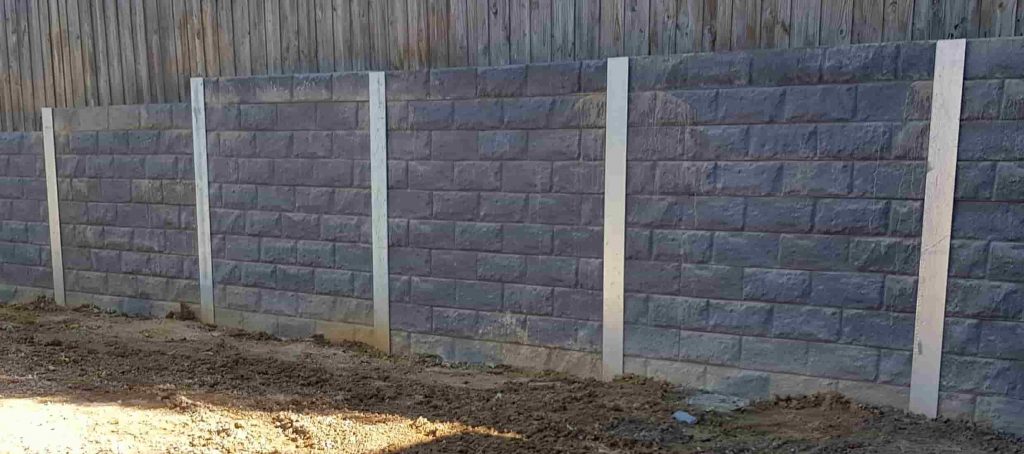Introduction
When it comes to home improvement and landscaping, numerous components enter into play. Among the most crucial parts is the keeping wall. It not just serves functional purposes however also enhances the aesthetic appeal of your property. But have you ever questioned the function of a retaining wall contractor? In this article, we'll check out how these professionals exceed mere construction, guaranteeing that your keeping wall stands strong and looks fantastic for many years to come.
Retaining walls are essential for preventing soil erosion, managing water overflow, and creating level surface areas in sloped areas. A retaining wall installer or builder need to have a mix of technical knowledge, creativity, and task management skills to provide an optimum option tailored to your particular needs.
The Role of a Retaining Wall Contractor: More Than Simply Building
A retaining wall contractor does far more than simply hammer away at bricks https://tuffstuffretainingwalls.com.au/ and concrete. They are associated with every aspect of the project-- from the preliminary consultation to the last touches that make the setup genuinely shine. Let's delve deeper into their responsibilities.
Understanding Client Needs
The first step in any project is understanding what the customer wants. An excellent professional will sit down with you to discuss your vision, expectations, and budget.
- What's Your Vision? Is it an easy stone wall for aesthetic appeal? Or do you need something more robust like a concrete sleeper wall for structural support? What's Your Budget? Understanding financial constraints assists customize services that fit both needs and wallet.
Site Assessment
Before breaking ground, an extensive evaluation of the website is important:
- Soil Analysis: The type of soil impacts how well a wall will hold up. Drainage Considerations: Water management is critical in keeping the stability of the wall over time.
Designing the Maintaining Wall
Once client requirements are understood and website evaluations are finished, the fun part starts-- developing!
Choosing Materials Wisely
Different products serve different functions:
- Concrete Sleepers: Durable and versatile. H Beams: Best for sturdy applications. Wood Sleeper: Provides natural aesthetics however needs maintenance. Timber Sleeper: Similar to wood but with added treatments for longevity. Stone Walls: Visually pleasing but can be cost-prohibitive.
Planning Regulations
Every area has its own building regulations and guidelines concerning keeping walls:
- Permits Required? A credible specialist will assist browse this complex landscape. Zoning Laws: Knowing what's enabled will conserve headaches later on on.
Engineering Calculations
A solid structure is essential to any effective keeping wall. Engineers work along with contractors to guarantee:
- Proper load calculations Appropriate drainage solutions
Preparation and Excavation
Preparation involves clearing particles and excavating as required:
Mark out where the wall will go. Dig trenches if necessary. Prepare base layers for stability.Installation Process
With whatever planned, it's time for installation!

Laying Foundations
A strong structure involves multiple layers:
Base gravel Geotextile fabric Layering stones or blocksBuilding Upwards
Once the foundation is set, walls begin taking shape:
- Stacking techniques vary based on materials. Proper positioning guarantees aesthetic appeals and functionality.
Incorporating Drainage Solutions
Effective drain prevents water accumulation behind walls, which can result in failure:
Weep holes Drainage pipes Gravel backfillFinishing Touches
What good is a gorgeous wall if it does not mix with your landscape?
Landscaping Around Retaining Walls
Adding plants or decorative stones can enhance visual appeal:
Native plants for sustainability Decorative rock featuresFAQ Section
1. What kinds of products do retaining wall professionals use?
Contractors generally utilize concrete sleepers, wood sleepers, wood sleepers, H beams, or stone depending upon your needs and budget.
2. The length of time does it require to build a retaining wall?
The timeline varies based on size and product; generally, anticipate anywhere from a few days to a number of weeks.
3. Do I require authorizations for constructing a retaining wall?
Yes! A lot of regions require permits due to zoning laws; always consult with your specialist regarding local regulations.
4. Can I install a retaining wall myself?
While DIY might appear tempting, employing a skilled specialist makes sure correct installation that stands up over time.
5. What upkeep do retaining walls require?
Maintenance can consist of checking drain systems regularly and replacing any broken sections as needed.
6. What takes place if my retaining wall fails?
A failing retaining wall can trigger considerable problems like soil erosion or residential or commercial property damage; it's best attended to instantly by professionals.

Conclusion
In summary, when thinking of installing a keeping wall on your residential or commercial property, it's clear that employing an experienced retaining wall contractor offers more than simply physical building; they bring proficiency in design, engineering principles, regional regulations compliance, website management skills-- and far more! From conception through conclusion-- and even beyond-- they're essential in crafting functional yet aesthetically attractive structures that withstand time's test while enhancing property value.
So next time you're considering adding among these necessary structures to your landscape, keep in mind: The role of a retaining wall contractor is certainly much higher than simply developing; it has to do with developing enduring quality while making sure security and appeal intertwine seamlessly!